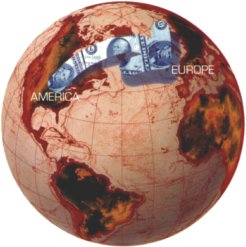PLEASE VISIT OUR SPONSOR ? CLICK ABOVE
|
|
Why Europe Beckons
Jones Lang Wootton’s September 1998 report, “European Property Investment: Key Facts and Issues for Investors,” includes a special report on American capital trends by Tony Edgley, international investment director, and JLW Director David Marks. Both work in the firm’s United Kingdom offices. The report identifies six U.S. capital sources driving real estate investments in Europe. They are: (1) U.S. pension fund capital being invested first in European equity and bond markets, with allocations to real estate markets likely to follow; (2) U.S. investment banks active in buying, lending and advising — banks that were successful at such strategies as turning around portfolios of distressed assets in the USA are eager to replicate their success in European markets; (3) Opportunity Funds, or Private Equity Funds, seeking opportunities in Europe — though much of their attention is now devoted to bargain-hunting in Asia; (4) real estate investment trusts looking for less expensive properties than what is currently available in the USA; (5) developers, mainly of U.S.-style entertainment complexes and factory outlet centers; and (6) hotel groups.
Multinationals Retrench Among other findings, the report makes the case that multinationals are retrenching and determining which products and services they will market and support in the rapidly changing European marketplace. Results of this process include: global management by product and service lines and the diminution of country line management responsibility; increased integration across national borders; a focus on core competencies, outsourcing and third-party provision; supply chain integration; the development and implementation of common technology systems platforms; technology driving as well as enabling change; and the consolidation of functions across major geographic regions and the emergence of shared service centers. “Reconfiguration affects where activities are undertaken,” the report points out. “Regions across Europe have benefited from and been adversely affected by these changes. The impact of ‘where’ has made inward investment a major driver of change to the economic landscape of Europe. It has assisted the transformation of regions.” Specifically, the report highlights several regions that are emerging as centers of expertise for Europe as a whole. These include:
Europe’s hottest cities for new and expanded projects are London; Dublin, Ireland; Moscow; Budapest, Hungary; Paris; St. Petersburg, Russia; Warsaw, Poland; Brussels, Belgium; Frankfurt, Germany; and Antwerp, Belgium, according to the E&Y/EIU report. Major recipients of inward investment are the UK, Germany, Poland, the Russian Federation, the Republic of Ireland, France, Hungary, Belgium and the Netherlands. These countries garnered over 83 percent of all projects. The star industrial sectors in Europe are software; chemicals; automotive (assembly and components); electronics; finance and insurance; office machinery and computers; and food and drink. Activity in these sectors tends to gravitate to geographic clusters in or near those regions listed above, although the report draws attention to significant projects under way in many other European locations, as well.
New Europe Strategies A more compelling question for companies considering European expansion strategies is whether to site projects in countries within the EU umbrella or in one of several markets slated to join but not yet subject to EU bureaucratic controls. These markets include Poland, the Czech Republic and Hungary. “These countries have fairly good potential for joining the European Union, but they would have two advantages — somewhat lower costs and a little more unemployment and they are in Eastern Europe,” says Greene. “A lot of the manufacturing industries would be very attractive to these areas,” and to foreign direct investors in general, he adds. But even these regional considerations, crucial as they are to specific expansion strategies, will soon give way to more global considerations. “Automobile component manufacturers are being mandated by the assemblers to be worldwide suppliers,” Greene relates. “These medium-sized companies are stretched trying to be a global supplier with just a percentage of the volumes the assemblers do in terms of sales. They have to look at the whole world, and how they serve their major customers around the world. “It becomes a question of global capabilities, setting priorities, and determining how to serve your customers on such a broad basis,” Greene continues. “They have to balance the need of the assembler who is in Europe already, but is also in Latin America, Asia and North America.” Applying limited technical, financial and other strategic resources globally is the key challenge for these organizations in the new millennium.
 | This Issue | Site Selection Online | SiteNet | Feedback | GeoSearch | ©1998 Conway Data, Inc. All rights reserved. SiteNet data is from many sources and is not warranted to be accurate or current. |
PLEASE VISIT OUR SPONSOR ? CLICK ABOVE

 JANUARY 1999
JANUARY 1999 Whether a global recession takes shape in the months ahead or not, count on continuing, substantial capital flows between the U.S. and Europe. Today’s institutional capital seeks global diversification in any location with the right return potential, even emerging markets. How much more attractive the stable markets of Western Europe look in the wake of the Asian and Russian financial crises, which are classic emerging market investment lessons.
Whether a global recession takes shape in the months ahead or not, count on continuing, substantial capital flows between the U.S. and Europe. Today’s institutional capital seeks global diversification in any location with the right return potential, even emerging markets. How much more attractive the stable markets of Western Europe look in the wake of the Asian and Russian financial crises, which are classic emerging market investment lessons.